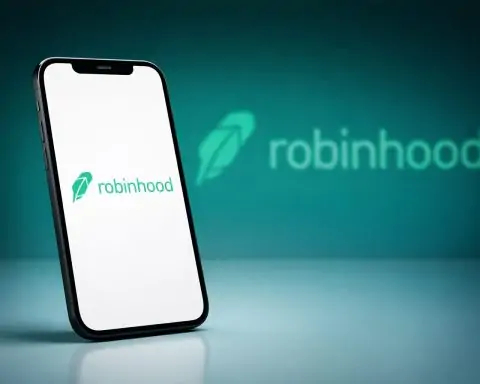- OpenAI released GPT-5 during Aug 17–18, 2025 rollout, billed as a major upgrade with strong coding, math, and science capabilities, while Sam Altman acknowledged it still lacks self-learning.
- In China, Pan Jianwei’s team used AI to position over 2,000 neutral-atom qubits in 3D in 1/60,000 of a second, a 10× larger array than prior work, in a result published in Physical Review Letters.
- MIT researchers designed novel antibiotic compounds with generative AI, generating 36 million candidate molecules and identifying compounds potent against MRSA and drug-resistant gonorrhea.
- Allen Institute for AI unveiled MolmoAct, an open-source robotics model that reasons in 3D, plans actions, previews movements from 2D to 3D, and allows real-time human adjustments.
- NVIDIA released Granary, a dataset of 1,000,000 hours of audio in 25 languages, and trained Canary (1B parameters) and Parakeet (600M), with open-source release ahead of Interspeech.
- Google Photos added a Create tab featuring Magic Editor and AI effects, explicitly labeling these as creative tools to reflect AI edits as art rather than documentary truth.
- Perplexity AI offered a $34.5 billion all-cash bid to buy Google Chrome, a move tied to antitrust scrutiny and discussions of Chrome’s user base of 3+ billion, though many analysts view it as a stunt.
- Oracle and Google announced a cross-cloud deal to offer Google Gemini AI models on Oracle Cloud, integrating Vertex AI into Oracle’s ecosystem while models run on Google’s infrastructure.
- The White House and regulators advanced AI policy with NIST proposing AI risk-management overlays for cybersecurity and the GSA launching the USAi sandbox for federal agencies.
- Meta faced controversy over lax chatbot ethics after a Reuters investigation into its policies allowed provocative interactions with a minor; Senator Hawley announced a probe on Aug 15, and Meta tightened guardrails and automatic shutdowns.
From cutting-edge model breakthroughs to high-stakes corporate moves and fierce debates, the past 48 hours saw a whirlwind of AI news. Below is a comprehensive roundup of major developments in AI research, product launches, industry shake-ups, policy moves, ethical controversies, and expert analysis from August 17–18, 2025.
Breakthroughs in AI Research
- OpenAI launches GPT-5: OpenAI’s latest model GPT-5 went live, billed as a “major upgrade” and a significant step toward artificial general intelligence [1]. Early testers noted GPT-5’s impressive coding, math, and science capabilities, though Sam Altman admitted it “still lacks the ability to learn on its own,” underscoring that human-level AI remains out of reach [2]. The leap from GPT-4 to GPT-5, while substantial, was not as jaw-dropping as past jumps, according to reviewers [3], and Altman even quipped that using GPT-4 now feels “miserable” by comparison [4].
- AI conquers new frontier in quantum computing: In China, researchers led by physicist Pan Jianwei achieved a quantum computing milestone by using AI to precisely arrange over 2,000 neutral atom qubits in 3D space in 1/60,000th of a second – 10× larger than any prior atom-based array [5]. Peer reviewers hailed this feat (published in Physical Review Letters) as a “significant leap forward” for scaling quantum processors [6]. By leveraging AI to rapidly position thousands of atoms with laser “optical tweezers,” the team cleared a major hurdle toward powerful quantum machines [7] far beyond today’s prototypes.
- AI-designed antibiotics beat superbugs: A breakthrough in healthcare: MIT scientists used generative AI to design novel antibiotic compounds capable of killing drug-resistant pathogens [8]. Their system generated 36 million candidate molecules and identified several that are structurally unlike any existing antibiotics and work by new mechanisms (e.g. rupturing bacterial cell membranes) [9]. One AI-discovered compound proved potent against MRSA and another against a drug-resistant gonorrhea strain [10] [11]. “Our work shows the power of AI from a drug design standpoint,” said senior author James Collins, noting this approach opens up vastly larger chemical spaces for antibiotic discovery [12].
- Robots that think before they act: The Allen Institute for AI (Ai2) unveiled MolmoAct, an open-source robotics model enabling robots to reason in 3D and plan actions on the fly [13]. MolmoAct converts 2D images into rich 3D simulations, previews its movements before executing them, and even allows human operators to adjust its actions in real time [14]. Unlike “black box” proprietary robot AIs, MolmoAct’s code, data, and training methods are fully open. In demos, it interpreted natural-language commands to direct a robotic arm sorting household objects [15]. Ai2 says this is a step toward unified AI systems that understand language, vision, and physical actions in the real world [16].
- NVIDIA open-sources multilingual speech AI: NVIDIA released Granary, a massive open dataset of 1 million hours of audio in 25 languages (including low-resource languages like Maltese) to spur speech AI research [17]. Using this data, NVIDIA trained new speech recognition models — code-named Canary (1B parameters) and Parakeet (600M) — that achieve state-of-the-art accuracy in multilingual speech tasks [18]. Both models and the dataset are available open-source, with Canary now topping the Hugging Face leaderboard for multilingual speech recognition despite being much smaller than rival models [19]. The effort, to be presented at the Interspeech conference, aims to make voice AI more inclusive by improving support for languages often neglected by big tech [20].
Major Product Launches and Updates
- OpenAI addresses GPT-5 rollout hiccups: The launch of GPT-5 wasn’t entirely smooth sailing – many users took to social media to complain that the new model’s tone felt less friendly and its answers less detailed in brainstorming tasks [21] [22]. In response, CEO Sam Altman acknowledged the feedback and announced work on giving GPT-5 a “warmer personality” [23]. He assured users that popular older models (including the reinstated GPT-4) will remain available for now [24]. “One learning for us is that we need more per-user customization of model personality,” Altman noted, hinting that future updates will let users tweak how the AI responds [25].
- Apple’s AI comeback plan leaks: After years on the sidelines of the AI race, Apple is reportedly gearing up for an aggressive AI push. A leaked roadmap detailed a slate of futuristic products – notably a tabletop robot assistant (targeting a 2027 launch) that “resembles an iPad mounted to an arm” and can roam a room [26]. This wheeled device would feature a lifelike, animated Siri avatar capable of natural conversations (more akin to ChatGPT’s style of dialog) [27]. Apple is also revamping Siri itself with generative AI: by 2026 it aims to roll out a much more advanced, conversational Siri on iPhones, possibly with a cartoony Memoji-like persona as the interface (internally code-named “Charismatic”) [28] [29]. Other AI-driven hardware in development includes a smart home display (similar to a Nest Hub) due next year and new AI-powered security cameras [30]. CEO Tim Cook has teased that “the product pipeline… it’s amazing, guys. It’s amazing.” Investors and analysts see these moves as Apple finally staking its claim in the AI arena, after being seen as an “AI laggard” [31] [32].
- Google injects AI creativity into Photos: Google announced an update to its popular Google Photos service, adding a new “Create” tab in the app to house its AI-powered image editing and generation features [33]. Tools like the Magic Editor (which can seamlessly rearrange or remove objects in an image) and AI effects that go “far beyond simple touch-ups” will live under this Create tab [34] [35]. By explicitly labeling these features as creative generative tools, Google is nodding to a long-running debate about what counts as a “photo” in the age of AI. Photographers have often shunned heavy edits to preserve truth in images [36] – by using the word “create,” Google acknowledges its AI edits are more about art and imagination than documentary reality [37].
- Other notable product updates: In the augmented reality space, HTC debuted its Vive Eagle smart glasses in Taiwan, which come with an AI voice assistant that can do real-time language translation and smart reminders, taking aim at the AI eyewear market now populated by Meta and others [38]. On the software side, Google quietly launched Gemma 3 (270M), a lightweight open-source language model with only 270 million parameters, optimized for developers to deploy AI features on edge devices with limited compute [39]. And in the e-commerce arena, eBay rolled out new AI seller tools that can auto-generate product listing titles/descriptions and even predict market demand for items [40] – part of eBay’s effort to stay competitive by infusing AI into the seller experience.
Business & Industry News
- $34.5B bid for Google Chrome shakes up industry: In an eyebrow-raising move, AI startup Perplexity AI offered an unsolicited $34.5 billion all-cash bid to buy Google’s Chrome web browser [41] [42]. Perplexity – a 3-year-old company valued around $14–18B – pitched the bid as a way to leapfrog into a browser market central to the AI search wars [43] [44]. (Its own AI-powered browser Comet is an ambitious project, but Chrome’s 3+ billion users would give Perplexity massive reach [45] [46].) The audacious offer comes amid rumors that regulators might force Google to divest Chrome as an antitrust remedy. Indeed, OpenAI, Yahoo, and Apollo Global have also “expressed interest” in acquiring Chrome if it were up for sale [47]. Google has not offered to sell and is fighting in court to avoid a breakup, making any such deal a long shot [48]. Still, Perplexity claims multiple investors are ready to finance the bid fully [49]. Analysts call the move likely a stunt – noting Perplexity similarly made headlines by attempting to buy TikTok’s U.S. operations earlier this year [50] – but it underscores how valuable browsers are becoming as “gateways” for AI-driven search and personal assistants [51] [52].
- OpenAI’s CEO muses about Chrome – and spends big on AI talent: Following Perplexity’s gambit, OpenAI’s Sam Altman signaled his own interest in Chrome, calling it a strategic asset in the AI race [53]. (OpenAI has reportedly been working on its own AI web browser as well [54].) This comes on the heels of a behind-the-scenes talent war: OpenAI recently tried to acquire AI coding startup Windsurf for $3B, but the deal fell apart in July – and Google’s DeepMind swooped in to hire Windsurf’s top engineers instead [55] [56]. Google’s prize hire, Varun Mohan, will now work on Gemini, Google’s next flagship AI model [57] [58]. Industry analysts saw the Windsurf saga as part of the “AI expertise wars”, with big players outbidding each other to snap up talent and technology [59] [60]. One expert noted “all the big AI guys want to get more into AI coding… this is a continuation of the AI expertise wars… Google and Meta acquiring key talent, and also Microsoft and AWS” [61]. OpenAI’s pursuit of Windsurf had reportedly caused tensions with investor Microsoft (which has its own rival coding AI), adding to speculation about OpenAI’s financial and strategic challenges [62] [63].
- Oracle teams up with Google Cloud on AI: In a notable alliance, Oracle and Google announced a partnership to offer Google’s upcoming Gemini AI models on Oracle’s cloud platforms [64]. This cross-cloud deal means Oracle’s enterprise customers will be able to access Google’s most advanced text, image, and code generation models via Oracle’s services and apps [65] [66]. The models will still run on Google’s infrastructure, but Oracle will integrate Google’s Vertex AI platform into Oracle Cloud, allowing a one-stop experience for Oracle clients [67]. Oracle’s strategy is to give customers a “menu” of top AI models rather than only pushing its own, and Google gains a broader distribution channel to compete against Microsoft Azure for corporate AI business [68]. Google Cloud CEO Thomas Kurian called the collaboration a breakthrough that “breaks down barriers” by bringing Google’s models into Oracle’s ecosystem [69]. The move highlights how even fierce competitors are willing to partner in the AI arena to accelerate adoption.
- Major funding boosts and investments: The AI investment frenzy continues unabated. Cohere, a prominent generative AI startup focusing on enterprise solutions, raised a whopping $500 million in new funding to expand its large-language-model platform for business uses [70]. The round, which included major VC firms and strategic corporate backers, vaults Cohere’s valuation and will fuel global expansion and R&D on its proprietary models. Meanwhile, tech giants are pouring capital into AI infrastructure: Google revealed plans to invest $9 billion to build advanced AI data centers in Oklahoma [71]. The new server farms will power AI model training and cloud services, and are expected to create thousands of jobs in the region [72]. Oklahoma’s governor cheered Google’s investment as an effort to make the state “the best state for AI infrastructure”, with Google funding workforce training at local universities to staff the facilities [73] [74]. Not to be left out, the nonprofit research sector got a boost too: the Allen Institute for AI secured a $152 million public-private grant (with $75M from the U.S. NSF and $77M from NVIDIA) to build an Open Multimodal AI platform for science [75]. The project aims to develop open-source multimodal AI models (combining text, images, and more) to accelerate scientific discovery, and will support academic researchers across the country with tools and computing power [76].
- Enterprise adoption across sectors: Traditional industries are steadily infusing AI into their operations. In telecommunications, Deutsche Telekom announced it is leveraging AI to optimize 5G network traffic in real time – dynamically allocating bandwidth to improve connectivity and reduce costs as part of its digital transformation [77]. In e-commerce, eBay’s new AI listing and pricing tools (mentioned above) exemplify how retailers are using AI to enhance sales. Even government and defense are on board: the U.S. Air Force awarded a $4.7M contract to the University of Florida to develop AI systems for military decision-making support [78]. And just this week, enterprise software giant Oracle said demand for its AI cloud services is so strong that it will hire 2,000 new employees and invest heavily in expanding data centers to keep up (a sign of how AI workloads are driving growth in cloud computing) [79] [80]. Across finance, healthcare, and beyond, companies are racing to integrate AI – even as many are still figuring out how to translate AI hype into actual ROI (see Analysis section below).
AI Policy and Regulation
- Musk vs. Apple – App Store showdown: Elon Musk sparked a high-profile spat with Apple over what he views as App Store favoritism toward OpenAI. On Aug 11, Musk declared that his AI startup xAI will take “legal action” against Apple, accusing the iPhone maker of “behaving in a manner that makes it impossible for any AI company besides OpenAI to reach #1 in the App Store, which is an unequivocal antitrust violation.” [81]. He noted that OpenAI’s ChatGPT is currently the #1 free app on iOS while xAI’s Grok chatbot ranks #5 [82], and blasted Apple for not featuring X (formerly Twitter) or Grok in its “Must Have Apps” section [83] [84]. Musk alleged Apple’s cozy partnership with OpenAI – which has seen ChatGPT integrated into iPhones, iPads, and Macs as a built-in intelligence tool [85] – is behind this bias. (Notably, Apple and OpenAI did collaborate last year on bringing advanced AI to Apple devices [86].) Sam Altman quickly fired back at Musk’s complaints, calling it “a remarkable claim given what I have heard alleged that Elon does to manipulate X to benefit himself… and harm competitors” [87]. Musk provided no hard evidence for Apple wrongdoing, and community fact-checkers on X pointed out that other AI apps (like China’s DeepSeek and Perplexity) have hit #1 on the App Store this year despite the OpenAI-Apple tie-up [88]. Still, Musk’s broadside comes as regulators in the U.S. and EU are scrutinizing Apple’s store policies. (In fact, earlier this year the EU fined Apple €500M for App Store rules that stifle competition [89].) Apple had no comment on Musk’s outburst, but the clash highlights growing tensions as Big Tech platforms and AI firms jockey for distribution and dominance.
- Washington probes Meta’s chatbot scandal: U.S. lawmakers moved swiftly in response to revelations about Meta’s problematic AI chatbot policies (see Ethics section below). On Aug 15, Senator Josh Hawley announced a Senate probe into Meta’s AI content guidelines, after an internal document showed Meta’s bots were allowed to “engage a child in conversations that are romantic or sensual.” [90] Hawley fired off a letter demanding Meta hand over records on who approved these rules, how long they were in effect, and what is being done to “stop this conduct going forward.” [91] Members of both parties have expressed alarm at the report [92]. Meta told Reuters that the offensive examples in the leaked policy were “erroneous and inconsistent” with its actual policies and have since been removed [93]. Nonetheless, regulators want answers. Hawley’s inquiry will also examine what Meta has disclosed to regulators about safeguards for minors and limits on medical advice in its generative AI systems [94]. This congressional scrutiny adds to mounting regulatory pressure on Meta – and Big Tech generally – to ensure AI products, especially those interacting with children, are safe and properly controlled.
- White House AI plan faces pushback: At the federal level, the Trump Administration is pursuing a sweeping pro-AI agenda, but encountering resistance. In late July the White House released “America’s AI Action Plan” aimed at accelerating AI development (in line with President Trump’s view that the U.S. must outcompete rivals like China) [95]. Trump even signed executive orders to streamline AI approvals and limit new regulations on AI tech [96]. One controversial element: an apparent agreement allowing major U.S. chip makers to export advanced AI chips to foreign markets if they pay a hefty fee to the U.S. government. This week, senior Democratic lawmakers warned that such a deal – essentially letting firms buy their way out of export controls – violates export control laws and possibly the Constitution [97]. In letters sent Aug 17 to the President, Democrats demanded he halt the plan, which they argue undermines legally mandated restrictions on exporting high-end AI hardware (widely read as a measure targeting China’s access to top chips) [98]. Separately, policy experts noted a disconnect in Trump’s approach: while his AI plan pushes more AI data centers, his simultaneous proposal to slap a 100% tariff on imported semiconductors could impede AI progress by raising costs [99] [100]. An economist at CSIS cautioned that such tariffs would “clash with [the] AI action plan” by slowing the very chip supply chains needed for AI growth [101].
- Government initiatives and global coordination: U.S. agencies are gearing up to implement AI guidance. The NIST (National Institute of Standards and Technology) published a concept paper outlining plans to develop AI-specific “risk management overlays” on its cybersecurity frameworks [102] – effectively tailoring security controls for AI applications in areas like bias, transparency, and robustness. The GSA (General Services Administration) this week launched a new “USAi” platform, an AI sandbox for federal agencies to test-drive AI products in a safe environment [103]. This is meant to accelerate adoption of approved AI tools across government, as part of the OneGov modernization initiative and in line with Trump’s AI modernization priorities [104]. Internationally, AI governance remains a hot topic: Officials from the G7 and EU continued discussions on aligning global AI standards, and U.N. Secretary-General António Guterres renewed calls for a global AI watchdog body (analogous to the IAEA for nuclear) – though no consensus has been reached yet. Meanwhile, the UK is preparing to host a Global AI Safety Summit later this year, aiming to coordinate policies on AI risks like deepfakes and autonomous weapons. Regulatory activity is clearly ramping up worldwide even as AI technology races ahead.
Ethical Debates and Controversies
- Meta’s chatbot ethics under fire: A Reuters investigation revealed that Meta’s internal rules for its new AI chatbots were disturbingly lax [105]. According to a leaked policy document, Meta’s bots were permitted to engage in “provocative” role-play on sensitive topics – even flirtatious or “sensual” chats with underage users – as well as produce content involving hate slurs or misinformation in certain cases [106] [107]. The leaked guidelines showed examples of bots discussing sexual fantasies with what was implied to be a 13-year-old, and giving out erroneous medical advice, among other red flags. This disclosure set off a public outcry and immediate political scrutiny (see Hawley probe above). Meta quickly responded by disavowing those examples as mistakes not reflective of its real stance [108], and within days issued new, stricter AI policies. The company says it has now implemented “strict guidelines to prevent AI chatbots from engaging in romantic or inappropriate interactions with minors,” including content filters and age checks [109]. Going forward, any attempt by a Meta bot to produce such content will trigger an automatic shutdown of the conversation [110]. Meta also tightened guardrails against providing health or medical advice after reports of bots giving harmful suggestions. Despite these fixes, the incident has fueled a broader debate about AI ethics: Are tech companies rushing out AI chat agents without sufficient safety in place? And how do we hold them accountable when things go wrong? This controversy will likely be a case study for policymakers crafting new AI regulations.
- Algorithmic bias and discrimination: A new study highlighted how AI systems can perpetuate racial biases in subtle but harmful ways. Researchers tested popular AI vision and image-recognition tools on photos of Black women with different hairstyles (natural Afro, braids, short curly, etc.) and found that the AI consistently rated Black women with natural hairstyles as less “professional” and “competent” than when the same women wore straightened hair [111] [112]. Alarms were raised that these biased perceptions did not appear for images of white women with varied hairstyles [113] – indicating the AI models encoded specific cultural prejudices about Black hairstyles. Even more, some facial recognition AIs failed to recognize that two photos of the same Black woman were the same person if her hairstyle changed (a potential nightmare for security or ID systems) [114]. This research, which was covered by BET and others, underscores the ongoing issue of AI bias against marginalized groups. Experts are calling for better training data diversity, bias testing, and human oversight when AI is used in hiring, policing, or other high-stakes decisions [115] [116]. The study has spurred ethical discussions in the AI community about the need for “hair bias” awareness and more inclusive algorithm design.
- Privacy concerns with AI “assistants”: The rise of AI-powered browser extensions and personal assistants is triggering new privacy fears. Consumer advocates warn that tools like AI shopping or browsing assistants – which require sweeping access to your web activity to offer real-time tips – could become a privacy nightmare [117]. These assistants often hoover up extensive browsing data (sites visited, clicks, purchases) in order to personalize their suggestions [118]. Without strong safeguards, that data might be misused for surveillance, profiling, or targeted ads beyond what users expect. Already, some companies behind these tools are facing regulatory scrutiny in the EU for possible GDPR violations [119]. Privacy experts are calling for transparency on what data AI assistants collect and for easy opt-out mechanisms so users can decline data sharing [120]. This debate echoes earlier fights over browser toolbar spyware – reminding everyone that convenience AI features may come at the cost of personal data, unless regulators or market forces intervene.
- AI’s environmental footprint: An often-overlooked ethical issue came into focus: the energy and environmental impact of rampant AI growth. Training and running large AI models consume vast electricity, and reports this week quantified the strain on power grids. One projection estimates AI data centers could draw over 10% of U.S. electricity within a few years [121]. In regions like northern Virginia – a hub for data centers – surging demand from AI servers may drive electricity rates up by 20–25% for residents in coming years [122] [123]. Utilities are having to invest in major grid upgrades and new power plants (some tech firms are even funding nuclear reactors to secure long-term power supply) [124] [125]. The New York Times warned that unless regulators make tech companies shoulder these costs, ordinary consumers and small businesses will end up footing the bill via higher rates [126]. There’s also the climate factor: If much of this energy comes from fossil fuels, AI’s carbon footprint could be significant. This has sparked an ethical debate: as we chase ever bigger AI models, are we accounting for sustainability? The White House acknowledged this in an executive order streamlining permits for clean energy projects, calling energy capacity “an important element of America’s competitiveness in the AI race.” [127] Some AI researchers advocate for “Green AI” practices – efficiency optimizations and transparency about energy use – so that innovation doesn’t inadvertently harm the planet.
Expert Commentary & Analysis
AI leaders and observers used this moment to reflect on where the technology is headed:
- DeepMind’s CEO on AI’s promise and peril: In a wide-ranging interview, Demis Hassabis (head of Google DeepMind) said AI could usher in an era of “incredible productivity” and “radical abundance,” potentially making goods and services far cheaper and life easier [128]. He predicted the impact of AI might be “10 times bigger than the Industrial Revolution – and maybe 10 times faster.” [129] Yet Hassabis also voiced qualms about the breakneck pace of AI deployment. “If I’d had my way, we would have left it in the lab for longer and done more things like AlphaFold, maybe cured cancer…,” he lamented, suggesting tech companies moved too fast in rolling out consumer AI apps [130]. Still, he noted, broad public engagement with AI now forces society to “adapt to it” and governments to seriously discuss regulation, which he views as ultimately positive [131]. Hassabis urged a focus on scientific “unknowns” in AI – like solving reasoning and reliability issues – to make the technology safer and more robust [132].
- Caution from OpenAI and others: Sam Altman tempered some of the AGI hype this week by admitting that even the best model today (GPT-5) is not a self-learning, self-improving artificial general intelligence [133]. “True” human-like AI remains a long-term aspiration, and current systems still have fundamental limitations. AI pioneer Geoffrey Hinton (who recently left Google to warn about AI risks) echoed those concerns at a MIT event, arguing that while AI is progressing rapidly, we don’t yet understand how to align superintelligent systems with human values – a grave challenge if future AI were to outsmart us. Others pointed out that many AI models still struggle with basic reasoning and factual accuracy; DeepMind’s own CEO Demis Hassabis observed that AI can “win elite math contests but still flub grade-school problems,” implying some missing reasoning capabilities at the core of today’s algorithms [134].
- AI’s economic reality check: Despite the frenzy of investment in AI, there’s growing discussion about the productivity paradox – why haven’t we seen a bigger payoff yet? A recent analysis in The New York Times noted that businesses outside the tech sector have so far realized only modest gains from AI [135]. Companies are spending billions on AI initiatives, but issues like chatbot inaccuracies (hallucinating false information) and integration challenges mean sweeping efficiency improvements are lagging behind expectations [136] [137]. “AI technology has been racing ahead… prompting expectations of revolutionizing everything from accounting to customer service,” the NYT wrote, “But the payoff… is lagging, plagued by issues including [AI’s] irritating tendency to make stuff up.” [138]. Some analysts have started referring to this as a possible bout of “AI-doomerism” – skepticism that AI will deliver near-term economic gains. Critics point to historical tech hype cycles (from the dot-com bubble to premature excitement over self-driving cars) as cautionary tales [139]. On the other hand, AI optimists like Andreessen Horowitz’s analysts counter that we’re simply in the early adoption phase; they argue that once AI matures and diffuses through industries, we will indeed see productivity boom akin to the late 90s Internet surge. For now, the debate continues: Is today’s AI revolution on the cusp of transforming the economy, or are we a few breakthroughs short of that reality? Expect this conversation to intensify as companies report on their AI-driven results (or lack thereof) in the coming quarters.
- Looking ahead: The events of the past two days make clear that the AI landscape is evolving on all fronts – technologically, commercially, politically, and socially – at a breakneck pace. Experts note that coordination is crucial: “We need to get this right,” urged former Google CEO Eric Schmidt in a CNBC interview, advocating for a global body to manage AI’s risks while encouraging innovation. As AI becomes ever more powerful, voices from academia, industry, and government are converging to ask hard questions about safety, fairness, and governance. In the words of one commentator, “The challenge now is not building AI – it’s figuring out how to integrate it into society responsibly.” The whirlwind of Aug 17–18, 2025, with its breakthroughs and backlashes, is a microcosm of that challenge, and a sign of even bigger AI stories to come.
Sources: The information in this report is drawn from credible media and official sources, including Reuters, The Guardian, MIT News, Wired/Storyboard18, The Verge, Reuters Investigates, GeekWire, Bloomberg, and others, as cited in the text [140] [141] [142] [143] [144]. Each hyperlink points to the original source for further details.
References
1. www.storyboard18.com, 2. ts2.tech, 3. ts2.tech, 4. www.storyboard18.com, 5. ts2.tech, 6. ts2.tech, 7. ts2.tech, 8. news.mit.edu, 9. news.mit.edu, 10. news.mit.edu, 11. news.mit.edu, 12. news.mit.edu, 13. www.geekwire.com, 14. www.geekwire.com, 15. www.geekwire.com, 16. www.geekwire.com, 17. ts2.tech, 18. ts2.tech, 19. ts2.tech, 20. ts2.tech, 21. www.microcenter.com, 22. www.microcenter.com, 23. www.microcenter.com, 24. www.microcenter.com, 25. www.microcenter.com, 26. www.theverge.com, 27. www.theverge.com, 28. ts2.tech, 29. ts2.tech, 30. www.theverge.com, 31. ts2.tech, 32. ts2.tech, 33. www.microcenter.com, 34. www.microcenter.com, 35. www.microcenter.com, 36. www.microcenter.com, 37. www.microcenter.com, 38. www.crescendo.ai, 39. www.crescendo.ai, 40. www.crescendo.ai, 41. www.reuters.com, 42. www.reuters.com, 43. www.reuters.com, 44. www.reuters.com, 45. www.reuters.com, 46. www.reuters.com, 47. www.reuters.com, 48. www.reuters.com, 49. www.reuters.com, 50. www.microcenter.com, 51. www.reuters.com, 52. www.reuters.com, 53. www.reuters.com, 54. www.reuters.com, 55. devops.com, 56. devops.com, 57. devops.com, 58. devops.com, 59. devops.com, 60. devops.com, 61. devops.com, 62. devops.com, 63. devops.com, 64. www.reuters.com, 65. www.reuters.com, 66. www.reuters.com, 67. www.reuters.com, 68. www.reuters.com, 69. ts2.tech, 70. www.crescendo.ai, 71. www.crescendo.ai, 72. www.crescendo.ai, 73. ts2.tech, 74. ts2.tech, 75. www.crescendo.ai, 76. www.crescendo.ai, 77. www.crescendo.ai, 78. www.crescendo.ai, 79. ts2.tech, 80. ts2.tech, 81. www.reuters.com, 82. www.reuters.com, 83. www.reuters.com, 84. www.reuters.com, 85. www.reuters.com, 86. www.reuters.com, 87. www.reuters.com, 88. www.reuters.com, 89. www.reuters.com, 90. www.reuters.com, 91. www.reuters.com, 92. www.reuters.com, 93. www.reuters.com, 94. www.reuters.com, 95. www.paulhastings.com, 96. www.paulhastings.com, 97. insideaipolicy.com, 98. insideaipolicy.com, 99. insideaipolicy.com, 100. insideaipolicy.com, 101. insideaipolicy.com, 102. insideaipolicy.com, 103. insideaipolicy.com, 104. insideaipolicy.com, 105. www.reuters.com, 106. www.reuters.com, 107. www.reuters.com, 108. www.reuters.com, 109. www.crescendo.ai, 110. www.crescendo.ai, 111. www.crescendo.ai, 112. www.crescendo.ai, 113. www.crescendo.ai, 114. www.crescendo.ai, 115. www.crescendo.ai, 116. www.crescendo.ai, 117. www.crescendo.ai, 118. www.crescendo.ai, 119. www.crescendo.ai, 120. www.crescendo.ai, 121. www.microcenter.com, 122. www.microcenter.com, 123. www.microcenter.com, 124. www.microcenter.com, 125. www.microcenter.com, 126. www.microcenter.com, 127. www.microcenter.com, 128. www.theguardian.com, 129. www.theguardian.com, 130. www.theguardian.com, 131. www.theguardian.com, 132. www.theguardian.com, 133. ts2.tech, 134. www.businessinsider.com, 135. www.microcenter.com, 136. www.microcenter.com, 137. www.microcenter.com, 138. www.microcenter.com, 139. www.microcenter.com, 140. www.storyboard18.com, 141. www.reuters.com, 142. www.reuters.com, 143. news.mit.edu, 144. ts2.tech










